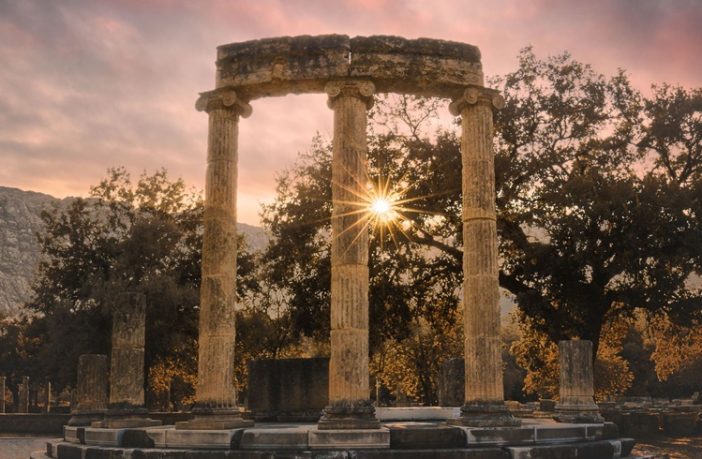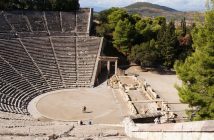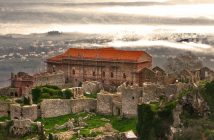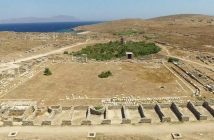The site of Olympia, in a valley in the Peloponnesus, has been inhabited since prehistoric times. In the 10th century B.C., Olympia became a centre for the worship of Zeus.
The Altis – the sanctuary to the gods – has one of the highest concentrations of masterpieces from the ancient Greek world. In addition to temples, there are the remains of all the sports structures erected for the Olympic Games, which were held in Olympia every four years beginning in 776 B.C.The sanctuary of Olympia, in the North West of the Peloponnese, in the Regional Unit of Eleia (Elis), has been established in the valley created by the confluence of the Alpheios and Kladeos rivers in a natural setting of beauty and serenity.
The Pan-Hellenic sanctuary has been established in the history of culture, as the most important religious, political and sports centre, with a history that dates back to the end of the Neolithic times (4th millennium BC). The famous sanctuary became the centre of worship of Zeus, the father of the twelve Olympian gods. For the Altis, the sacred grove and the centre of the sanctuary, some of the most remarkable works of art and technique have been created, constituting a milestone in the history of art.
Great artists, such as Pheidias, have put their personal stamp of inspiration and creativity, offering unique artistic creations to the world. In this universal place, the Olympic Idea was born, making Olympia a unique universal symbol of peace and competition at the service of virtue. Here, too, prominence was given to the ideals of physical and mental harmony, of noble contest, of how to compete well, of the Sacred Truce; values, which remain unchanged in perpetuity.
The Olimpia Archaeological Site of Elis in the Mora Peninsula of Greece was included in the UNESCO World Heritage list in 1989.




